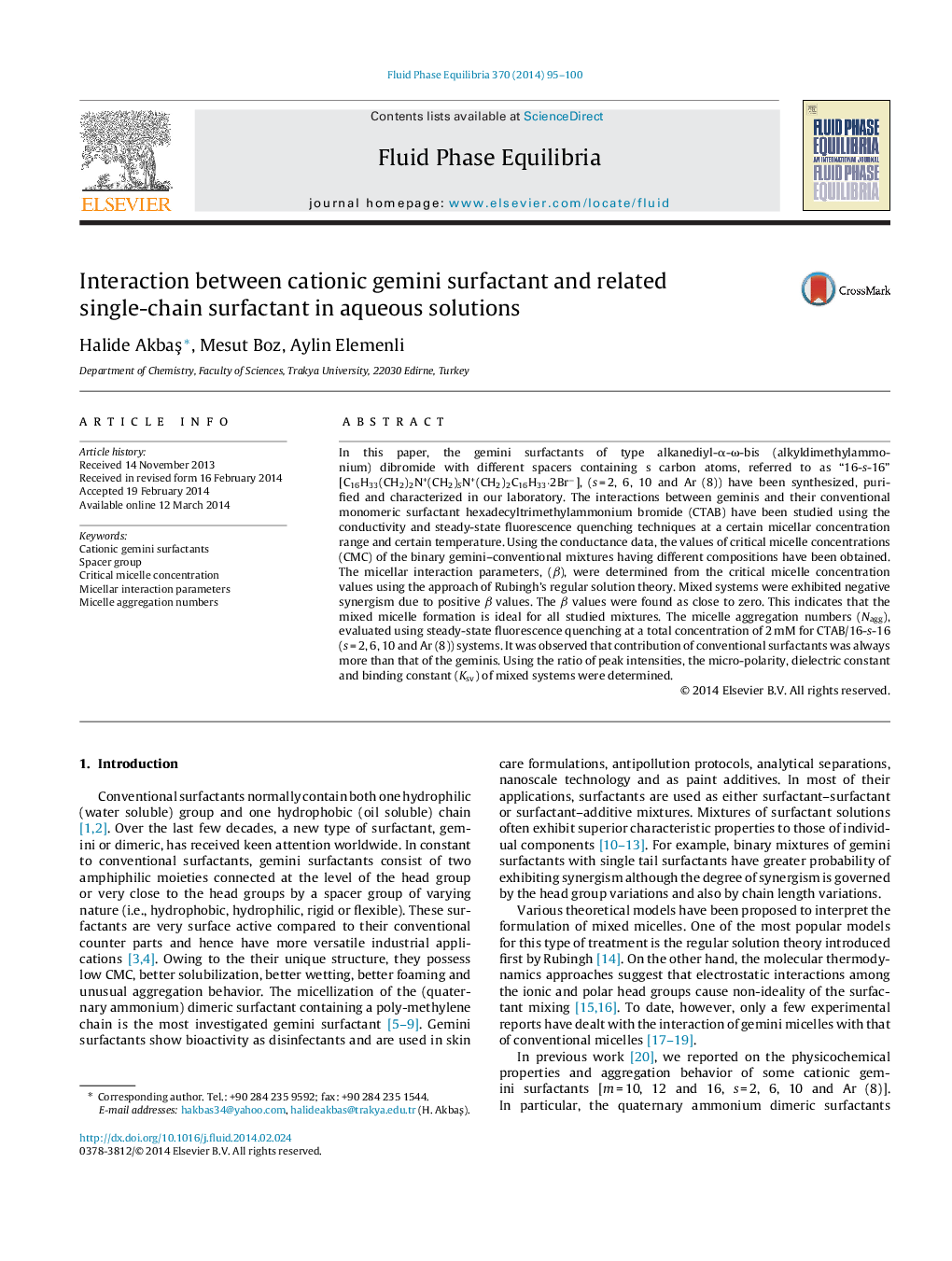| کد مقاله | کد نشریه | سال انتشار | مقاله انگلیسی | نسخه تمام متن |
|---|---|---|---|---|
| 202643 | 460614 | 2014 | 6 صفحه PDF | دانلود رایگان |

• Dimeric surfactants have attracted increasing attention due to their superior surface activity.
• Mixed surfactant solutions exhibit superior properties to those of individual components.
• The interactions between geminis–monomeric surfactant are ideal for all studied mixtures.
• The gemini surfactant with the longest spacer (16-10-16) had the smallest Nagg.
In this paper, the gemini surfactants of type alkanediyl-α-ω-bis (alkyldimethylammonium) dibromide with different spacers containing s carbon atoms, referred to as “16-s-16” [C16H33(CH2)2N+(CH2)SN+(CH2)2C16H33·2Br−], (s = 2, 6, 10 and Ar (8)) have been synthesized, purified and characterized in our laboratory. The interactions between geminis and their conventional monomeric surfactant hexadecyltrimethylammonium bromide (CTAB) have been studied using the conductivity and steady-state fluorescence quenching techniques at a certain micellar concentration range and certain temperature. Using the conductance data, the values of critical micelle concentrations (CMC) of the binary gemini–conventional mixtures having different compositions have been obtained. The micellar interaction parameters, (β), were determined from the critical micelle concentration values using the approach of Rubingh's regular solution theory. Mixed systems were exhibited negative synergism due to positive β values. The β values were found as close to zero. This indicates that the mixed micelle formation is ideal for all studied mixtures. The micelle aggregation numbers (Nagg), evaluated using steady-state fluorescence quenching at a total concentration of 2 mM for CTAB/16-s-16 (s = 2, 6, 10 and Ar (8)) systems. It was observed that contribution of conventional surfactants was always more than that of the geminis. Using the ratio of peak intensities, the micro-polarity, dielectric constant and binding constant (Ksv) of mixed systems were determined.
Representative fluorescence (emission) spectra of 2 10-6 M pyrene in aqueous micellar solution of 16-2-16/CTAB mixture at different quencher concentrations. The maximum intensity curve is for no quencher and the successive curves are for [Q] = 0.5, 1.0, 1.5, 2.0, 2.5, 3.0, 3.5 and 4.0 × 10−3 M, respectively.Figure optionsDownload as PowerPoint slide
Journal: Fluid Phase Equilibria - Volume 370, 25 May 2014, Pages 95–100